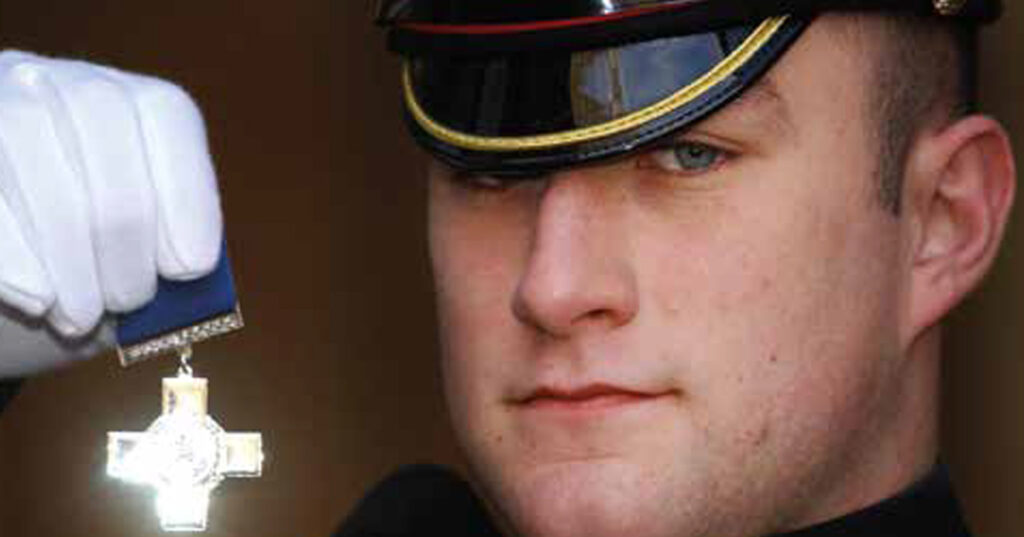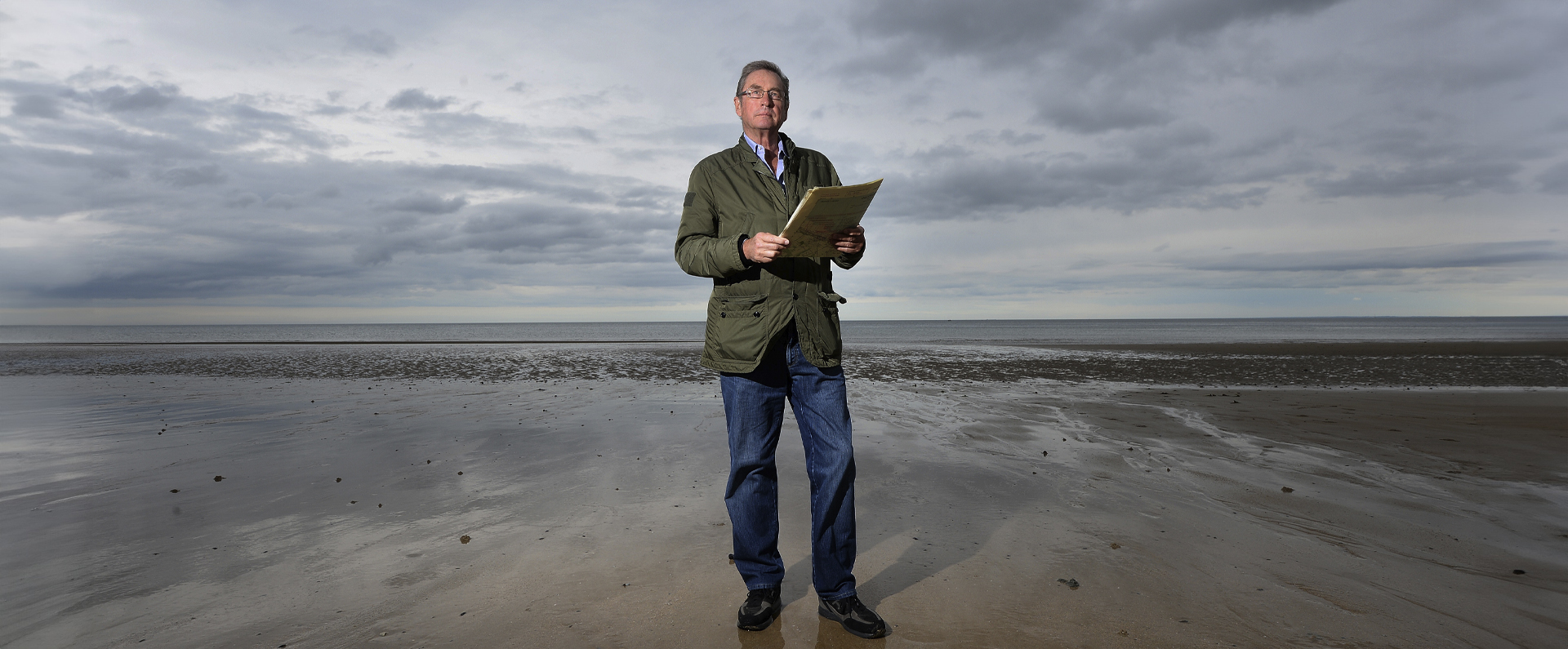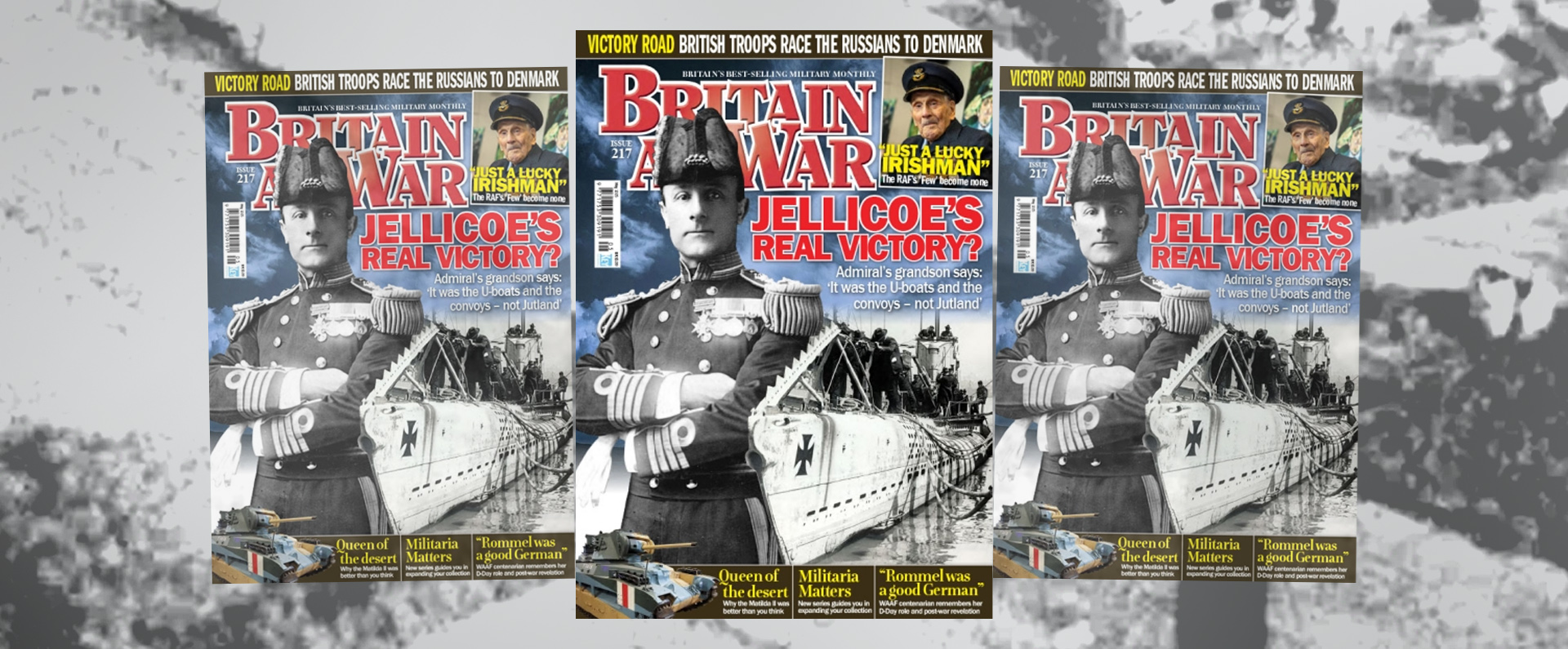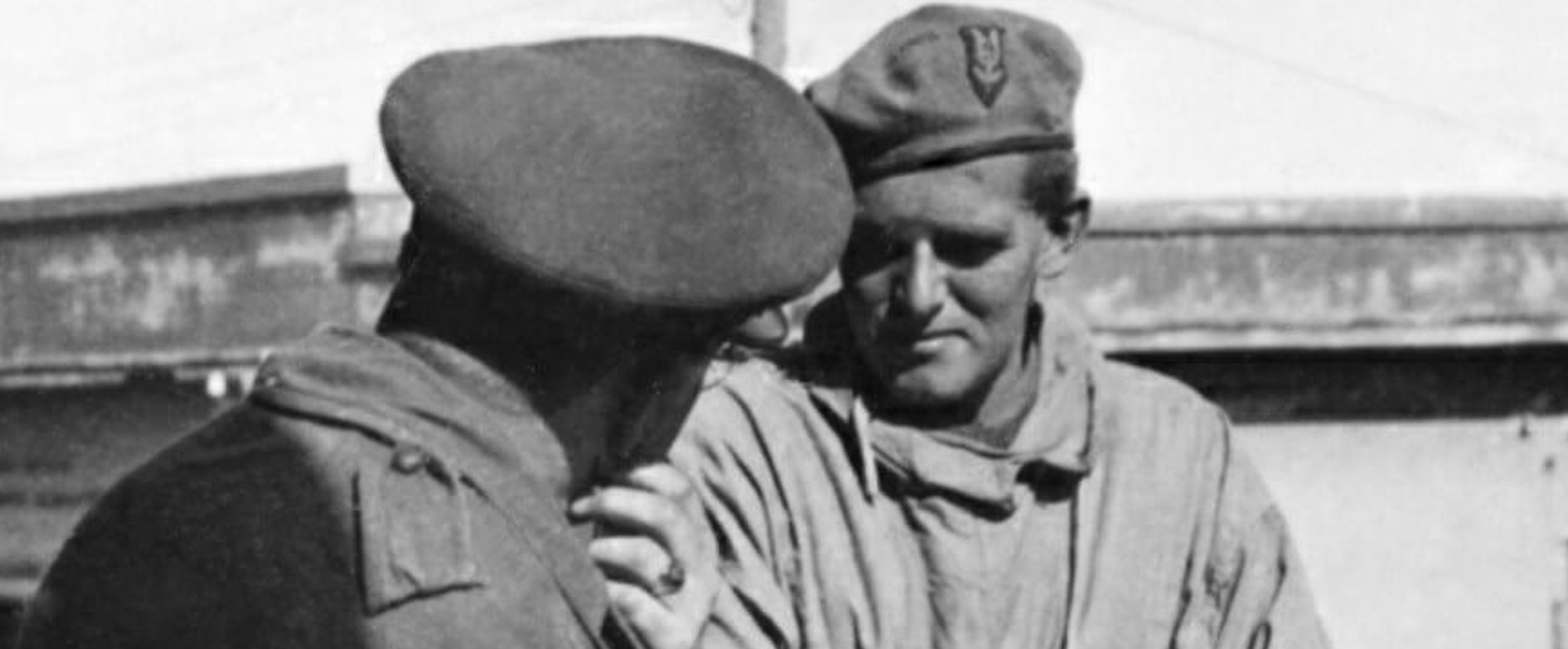
Published in Britain at War in September 2019.
Lance Corporal of Horse Christopher Finney GC
Christopher Finney was just eighteen years old when he took part in a dramatic battlefield action for which he would become the youngest serviceman to receive the George Cross (GC). Furthermore, he is also believed to be the only serviceman to receive this prestigious gallantry medal as a result of a “friendly fire” incident – what the military call a “blue on blue” attack.
The son of an IT worker and the middle of three children, he was born in Brussels, the Belgian capital, on 23 May 1984. However, he was brought up in, first, the Manchester area, and then, Dorset, where he attended Ferndown Upper School. While there, he joined the Dorset Army Cadet Force aged thirteen, after he and his best friend decided on a military career.
Aged sixteen, he joined the Army on 10 September 2000 at the Army Foundation College in Harrogate, North Yorkshire. He began the second phase of his training on 11 September 2001 – the day of the “9/11” terrorist attacks on the US – March 28 specialising as an Armoured Vehicle (AV) driver. On 4 January 2002, he joined the Household Cavalry – the Blues and Royals – based at Windsor.
As Britain prepared to join the Coalition invasion of Iraq – to topple President Saddam Hussein – Trooper Finney was based in Kuwait as part of D Squadron. His squadron crossed the border on the morning of 21 March 2003.
A week later, on 28 March, his squadron was advancing along the Shatt-al-Arab waterway, north of Basra, Iraq’s second city. The group was in an exposed area of desert some thirty kilometres ahead of the main force of 16 Air Assault Brigade. Their mission was to recce Iraq’s 6th Armoured Brigade. Finney, who had less than a year’s experience as an AV driver, was in the lead Scimitar, a “mini tank” which is fast and manoeuvrable over rough terrain.
In the early afternoon, the two lead vehicles paused besides a levee to allow the troop leader to assess the situation. Without warning, they were attacked by two Coalition Forces ground-attack aircraft which had mistaken them for enemy vehicles.
Both vehicles were hit and caught fire. In the ensuing chaos, ammunition began exploding in the turrets of the Scimitars. Finney scrambled out of his driving position and started to run for cover when he noticed that his vehicle’s gunner was trapped in the turret. Finney climbed on to the fiercely-burning vehicle, thereby putting himself at great risk from incoming fire. Despite the flames, smoke and exploding ammunition, he managed to pull out the injured gunner and to get him off and away from the Scimitar. Once in a safer area, Finney began to bandage his comrade’s wounds.
The troop leader in the second vehicle had also been injured in the attack and there was no senior rank to take control of the situation. Recognising the need to inform headquarters of the situation, Finney broke cover, returned to his burning vehicle and calmly radioed a report on what had happened over his radio. He then immediately returned to his injured gunner and helped him towards a Spartan vehicle from the Royal Engineers which had moved forward to help.
As Finney looked to the skies, he saw that the aircraft were lining up for a second attack. Yet still he helped his colleague towards the Spartan. When both aircraft fired their cannon, Finney was wounded in the lower back and legs while the already-injured gunner was hit again.
Despite his injuries, Finney completed his task of getting the gunner to the Spartan. He then saw that the driver of the second Scimitar was still in his burning vehicle and he set out to rescue him as well. Finney climbed on to the burning Scimitar, but the combination of heat, smoke and exploding ammunition beat him back. He collapsed a short distance from the vehicle and was attended to by the crew of the Spartan.
Four of those in the two Scimitars were injured and the gunner, Lance Corporal of Horse Matty Hull, aged twenty five, in the second vehicle was killed. Lance Corporal Alan Tudball, the gunner in Finney’s vehicle, was the most seriously injured although, after a month in a coma, he survived.
The injured were taken by Puma helicopter to a field hospital in Iraq and, later, by Chinook helicopter, for treatment on RFA (Royal Fleet Auxiliary) Argus, a hospital ship. Eventually they were flown back to Liverpool for hospital treatment. Finney was off duty for six weeks but made a full recovery.
Finney’s GC was announced on 31 October 2003 when a lengthy citation ended: “During these attacks and their horrendous aftermath, Finney displayed clear-headed courage and devotion to his comrades which was out of all proportion to his age and experience. Acting with complete disregard for his own safety even when wounded, his bravery was of the highest order throughout.” Finney received his medal from the Queen at an investiture in Buckingham Palace on 25 February 2004.
In February 2007, the official British board of inquiry report into the death of Hull blamed American pilots for shooting at the soldier’s vehicle “without authorisation” and after inadequate checks. Weeks later a British coroner ruled that Hull’s death had been unlawful and a criminal act by the American A10 pilots – a decision rejected by the US.
By the summer of 2008, a year after he had been promoted to Lance Corporal of Horse, Finney was disillusioned with military life and gave a year’s notice that he was quitting the Army. He left in July 2009.
In an interview for my book George Cross Heroes, first published in 2010, Finney recalled the few minutes that led to his GC award. “I had the hatch closed and, as the driver, it’s literally like looking through a letter box and you can’t see much around you. The gunner to my side and our commander was directly behind me. That’s when we got hit – completely out of the blue. I assumed we had been hit by a RPG [Rocket Propelled Grenade]. My commander started shouting; ‘Reverse. Reverse. Reverse.’ What I didn’t know was that he said it as he was climbing out. Because then he was no longer in the vehicle and he didn’t tell me to stop.
“So I kept reversing until we got another massive bang, which I initially thought was us being hit again, but, in fact, I had reversed into the other vehicle. As I got up to get out [of the burning vehicle] I saw three people running away which I initially thought were enemy but in fact it was my commander and the commander and driver from the vehicle behind. I then reached for my rifle behind me and it was then that I realised how bad the flames were because they stopped me from getting to it.
“Then I got out of the vehicle and stood on top of the vehicle. I didn’t have my combat helmet or my rifle and my body armour was open so then I felt very vulnerable. I jumped off the front of the vehicle and came around between the front and the berm [raised bank] for cover. Then I saw Alan [Lance Corporal Tudwall] was trying to pull himself out of his hatch but he couldn’t get out and he was shouting for help.
“Everyone says I made a big, brave decision to go to help him, but it gave me something to do rather than stand there panicking. So I climbed back on to the vehicle and literally grabbed him. With the adrenalin flowing, I literally pulled him up with one hand. The vehicle was burning quite badly and the ammunition was starting to go off so it was a bit hairy. But there was no decision to be made. He was a friend of mine and so I wasn’t going to walk off and say ‘See you soon.’
“We got off the vehicle – it wasn’t the smoothest landing. He was stumbling around holding his head, but after a few steps he just went over – his left femur was smashed to pieces. A 30mm round from the plane had gone straight through his thigh bone. I went over to him and could see he had a horrific injury. I was trying to help him but I was struggling to reach his morphine from his right leg pocket when the planes came round again. That was the first I knew we had been hit by a plane and I could see the pilot [of one of the planes] and that was when I knew we had been hit by ‘friendly fire’.
“Then the planes started firing again and, although it sounds cliched, the whole thing went into proper slow motion. Apparently it’s the result of your brain reacting quicker than your body can keep up. I thought right: ‘I have got to drag Alan round to the front of the vehicle, tuck him underneath and hopefully the rounds will come over us.’ But, as I grabbed him, my whole arm shook, which I later realised was him being hit and the force going through me. I then got hit – I went down on my knees – but I got back up and I honestly didn’t feel anything because of the adrenalin and things.
“Then I looked down and there was blood pouring from my backside and my right calf. But then I saw Alan and he was a mess: his head was smashed open, the muscle and tissue was hanging from one of his arms, his eyes were rolled back and there was blood coming from his head and chest – while his leg, from before, was still a mess. I thought he was dead. But I lay down next to him and put my arm round him because he was a really good friend. Then two Spartans from the Royal Engineers arrived to help.
“Then I went back to my vehicle and, using Alan’s headset, I rang through [to headquarters] what had happened. Then Staff Sergeant ‘Syd’ Sindall [who had arrived on the scene] and I heard the gunner in the second vehicle shouting for help. We both got back on the vehicle but it was burning horrifically and there was nothing we could do.’ So we jumped off the side and I tapped the side of it and said: ‘Ta, ta, Matty’. The next thing I remember is one of the [Royal] Engineers coming over and throwing me over his shoulder. The next bit is hazy because I guess I must have passed out.”
When Joe Calzaghe, Britain’s only undefeated world boxing champion, read in November 2009 that Finney was working in a call centre, he offered him a year-long job as his corporate ambassador, spearheading his charity work for Help for Heroes. Today Finney, now thirty-five, lives in north Cornwall with wife, Liz, and their three daughters. The couple run Goonhavern Garden Centre and Chacewater Garden Centre.
Download a PDF of the original Britain at War article
For more information, visit:
LordAshcroftOnBravery.com


